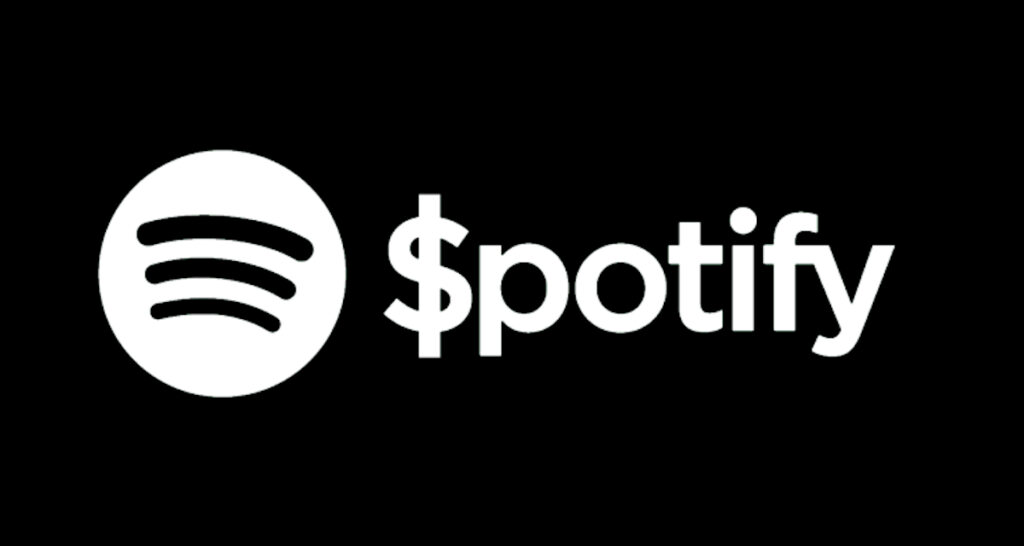Spotify Stock Surges As Q3 2023 Delivers Six Million New Subs, $34 Million Operating Profit: ‘We Will Consistently Be in the Black Moving Forward’


Spotify stock spiked in value following the release of the company’s Q3 2023 earnings report.
Spotify stock (NYSE: SPOT) has spiked following the release of a seemingly strong Q3 2023 earnings report, including the addition of six million paid subscribers and an operating profit of €32 million (currently $33.88 million).
The music-streaming platform posted its third-quarter financials today, and according to the resource, Spotify boasted 574 million non-trial monthly active users (MAUs) on the quarter. The total reflects a 26% year-over-year (YoY) boost and a 4% quarterly hike.
Within the figure, the Stockholm-based business identified 226 million paid users (a quarterly improvement of six million) and 361 million ad-supported MAUs (a quarterly increase of 18 million). Spotify also highlighted that Latin America (where streaming is dominant, including in major markets such as Brazil) and Rest of World had, thanks mainly to a 5% quarterly expansion for the latter, enlarged their joint usership share during Q3. The regions accounted for 52% of MAUs on the quarter, against 19% for North America and 28% for Europe, per the document.
While the majority of subscriptions remain concentrated in North America and Europe, Spotify (which raised prices in some 50 countries over the summer) pointed to a combined 34% Q3 subscribership share for Latin America (21%) and Rest of World (13%).
Looking forward to 2023’s final quarter, Spotify has forecasted the addition of 27 million MAUs (to 601 million), including nine million subscribers (to 235 million).
Shifting to the corresponding financials, Spotify disclosed €3.36 billion ($3.56 billion) in Q3 2023 revenue, consisting of €2.91 billion ($3.08 billion) from paid accounts as well as €447 million ($473.29 million) from ad-supported accounts. Each of the figures represents a double-digit jump on both a quarterly and YoY basis.
Meanwhile, after making layoffs and dialing back certain advertising initiatives, Spotify trimmed from Q2 2023 a cumulative €160 million ($169.41 million) in R&D, sales and marketing, and general/administrative expenses, the report shows. Of course, these points contributed to the mentioned €32 million operating profit – against a €247 million ($261.53 million) operating loss during Q2.
Spotify’s Q3 free cash flow reached €216 million ($228.65 million) as net income came in at €65 million ($68.82 million), according once again to the resource. During the corresponding earnings call, CFO Paul Vogel, whose company has forecasted Q4 operating profit of €37 million ($39.20 million), emphasized that Spotify intends to remain in the black in the long term.
“We’re obviously very pleased to see some of the initial success with an operating profit in Q3 and guidance for operating profit in Q4 as well,” stated Vogel. “And our expectations are now that we will consistently be in the black moving forward.”
Elsewhere in the Q3 earnings call, Vogel and CEO Daniel Ek touched upon topics including audiobook consumption, podcasting’s profitability outlook, and more. At the time of this writing, Spotify stock (NYSE: SPOT) was worth $171.69 per share, for a nearly 11% increase on the day.
On Early Audiobook Consumption Stats
“For subscribers that hit that base of 15 hours [of audiobook listening] a month, there is the ability to top up,” said Ek. “There’s already today the ability for discreet payments, where consumers can upgrade. And we’re already seeing consumers doing that in ways we probably wouldn’t have imagined, where some consumers are heavily upgrading and being really heavy audiobook listeners already, day one. But obviously the base is very small, so it’s impossible for us to say where that leads us long term.”
On Podcasting Profitability
“We should actually get to break even in podcasting pretty soon,” relayed Vogel, “and we feel really good about the trajectory of the podcasting trends, having gone from a pretty big drag a year ago to something that’s a pretty minimal drag, to something that should be positive to gross profit in the pretty short term.”
On Revenue Attributable to Two-Sided Marketplace Initiatives
“I think as Daniel said,” relayed Vogel, “Marketplace is one part of the equation and everything we’ve done. It has grown very nicely. We haven’t given out specific numbers, but it continues to be a big driver of growth for us on the margin side. And it’s just really about adding more value into the ecosystem. … It has definitely been one of the components that’s helped the music margins improve.”
Link to the source article – https://www.digitalmusicnews.com/2023/10/24/spotify-stock-q3-2023-earnings-report/
Recommended for you
-
CAHAYA 41 Inch Acoustic Guitar Bag 0.35 Inch Thick Padding Water Resistent Dual Adjustable Shoulder Strap Guitar Case Gig Bag with Back Hanger Loop, Black CY0152
$39,89 Buy From Amazon -
Fender Geddy Lee Jazz Bass, 3-Color Sunburst, Maple Fingerboard
$0,00 Buy From Amazon -
Roland Juno DS-88 Synthesizer Bundle with Sustain Pedal, Adjustable Stand, Bench, Dust Cover, Austin Bazaar Instructional DVD, and Polishing Cloth
$999,99 Buy From Amazon -
Sai Musicals Bb Flat Cornet Trumpet in Green Nickel Finish, Student Practise Mute for Beginners with Carrying Hard Case & Mouthpiece, Gifting Option for Birthday, Easter & Thanksgiving (Green)
$145,00 Buy From Amazon -
Guitar Wall Mount, Guitar Hangers hooks Bracket Holders for Acoustic and Electric Guitars Bass Banjo Mandolin, Black Walnut Wood base by VEINTICO.
$9,99 Buy From Amazon -
PreSonus Studio 26c 2×4, 192 kHz, USB Audio Interface with Studio One Artist and Ableton Live Lite DAW Recording Software
$0,00 Buy From Amazon -
IK Multimedia iRig Stream SOLO audio interface for iOS & Android devices, iPhone, iPad, with 1/8″ TRRS jack & 2 RCA, connects directly to mixers & Dj decks
$59,99 Buy From Amazon













Responses